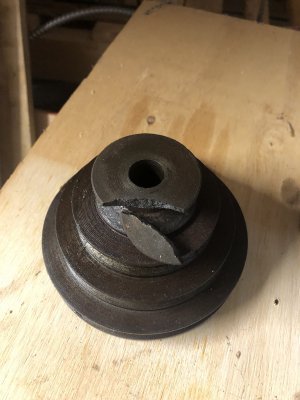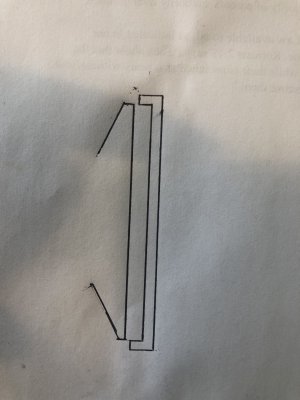In the disassembly of a step pulley from the new/old drill press I recently got, I dropped the pulley as I was coaxing it off the shaft. #&D^#%@!!
Any suggestions on how to repair?
There is plenty of room for a patch. I was thinking of turning a piece of steel to the OD, drilling and tapping a number of smaller holes to bolt the plate on, and the install a couple of bolts in the small piece. As the piece will be in compression when the belt applies pressure, the bolt in the piece are more to hold it in alignment than hold against the force of the belt.
Probably add Plastic Steel just because I bought large tubes of it from Princess auto.
Do you think I'm on the right track?
Thanks!
Any suggestions on how to repair?
There is plenty of room for a patch. I was thinking of turning a piece of steel to the OD, drilling and tapping a number of smaller holes to bolt the plate on, and the install a couple of bolts in the small piece. As the piece will be in compression when the belt applies pressure, the bolt in the piece are more to hold it in alignment than hold against the force of the belt.
Probably add Plastic Steel just because I bought large tubes of it from Princess auto.
Do you think I'm on the right track?
Thanks!



